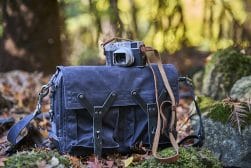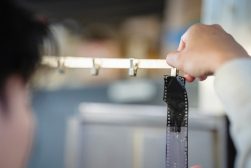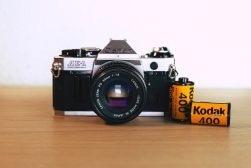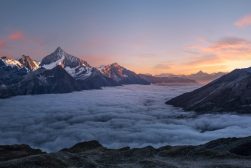
Location Scouting Tips for Film Making & Photography in 2024
Find out everything you need to know about location scouting for film and photography, including how to find locations, pro tips, and more!
Learn Filmmaking | Learn | By Ana Mireles
Many people hear about location scouting and think it’s exclusive to big Hollywood movies.
However, in truth, every photographer, video maker, and filmmaker needs to scout locations.
When the production is big enough, there’s a person whose role is dedicated exclusively to this. If not, it’s the creator who takes care of it.
Whether you want to become a location scout or plan your next shoot, this article can help.
Here, you can find out what location scouting is and why it’s important to help you find places to take pictures near you.
You’ll also find out the difference between scouting filming locations and scouting locations for photography projects.
Beyond that, you’ll find useful tips on how to do it and how to get into the business.
Let’s get right to it!
What is Location Scouting?
Scouting a location means researching it and visiting it to determine whether it’s suitable for some type of media production.
A location scout gathers all the information necessary from a location. This helps the director and producer find the best venue for their project.
Most people relate this term to film, video, and TV production. However, many photographers also need to scout locations for their photoshoots.
What is location scouting in photography?
The process of scouting a location is much the same in photography as in filming or video production. What may differ are the requirements
In essence, to scout a location, you need to research possible locations until you find a suitable place to carry out your project. You’ll also need to contact the property owners and secure all the necessary paperwork.
Although there are many similarities between photography and film, there are also differences. For example, you don’t have to worry about ambient sound in a photography location.
Also, the venue can be smaller. This is because there are fewer people involved and less equipment required.
Finding the perfect location for a shoot is part of the pre-production process. It needs to meet the technical requirements and fit the creative vision of the project.
You also need permits to work there and to use the resulting images or videos.
So, essentially, it’s the type of location and the production requirements that differ between scouting a filming location and one for still photos.
Why is location scouting important?
Scouting possible locations is an essential part of the pre-production process because the location provides the context to your story.
You need to ensure it matches the ambiance, that there aren’t any anachronisms, etc.
It also allows you to see and understand the available light on the scene. This way, you can determine when it’s best to shoot and if you’ll need artificial light and equipment.
Location scouts for film productions also need to check if there are audio problems – for example, any sounds that would interfere.
How Much Do You REALLY Know About Photography?! 🤔
Test your photography knowledge with this quick quiz!
See how much you really know about photography...

All of this allows you to list everything you’ll need to bring.
Who is responsible for location scouting?
When the production team is small, one person works as a location scout and location manager.
If there’s enough budget, there’s a professional figure called a location scout. They are in charge of visiting different locations and they respond directly to a location manager.
Location managers, meanwhile, take care of the logistics. They’re also the contact between the location owners and the crew.
Last but not least, they need to secure all the necessary filming permits.
Big productions working across many locations usually have a dedicated team for location management.
How much does location scouting cost?
Most location scouts charge a daily fee. Usually, it’s something between US$500 and US$800.
Of course, this can change depending on several factors.
- Where are you shooting/filming? The prices may be very different between countries and even between cities.
- How many locations do you need? Is your production in one location, or do you need to find many of them?
- How far apart are the locations? If you need to find more than one location, are they in the same city? If not, you might need two or three location scouts. Otherwise, you must consider extra days and traveling expenses.
- How difficult is it to reach the location? Scouting five apartments in the city center in one day may be possible. However, visiting five abandoned asylums in the middle of nowhere isn’t.
How Do Location Scouts Find Locations?
As we mentioned, scouting locations is part of the pre-production process.
The first step for it is to do a script breakdown. Here, you can identify all the locations you’ll need.
Together with the production designer, the scout identifies the characteristics of each location. Now, they know precisely what to look for.
The question is, where to look?
You can start by searching on dedicated websites. Here, owners offer their properties for film and photography production.
You can also check the film commission of your town. These can be public or government organizations dedicated to helping media producers.
Another great source is real estate listings.
As you advance in your career, you’ll get to know more venues and can make your personal directory.
Don’t forget to drive around, keep your eyes open and get to know your city inside and out.
Even when you’re not working, make a note and take photos of the places you visit. They might come in handy for a future project.
Things to consider when scouting locations

Credit: Chris Murray
Many factors can make a location the perfect spot for your project. Here’s a list of some of the most important things to consider.
- The director’s vision
This should be the first thing to consider. Does it match the director’s vision? Otherwise, it might have all the practical and technical advantages, but it’s not useful for this project.
Of course, there’s often a compromise between the aesthetics and the logistics. However, it’s good to start with a location that’s already close to the director’s idea.
- Accessibility
When you scout locations, you should consider the time it takes you to get there.
Also, are the roads suitable for all types of transportation? Remember that a film production moves with big trucks. They need them to carry equipment, props, wardrobe, catering, etc.
Closely related to this, you also need to consider the parking space.
Is it enough for the production trucks and the cars from the cast and crew? Is it paid parking? If so, how much does it cost?
All this information is helpful to the location manager. This way, they can work on the logistics of arrival and departure from each location.
- Facilities
Location scouts also need to check the facilities of the filming locations.
They should note what is available at the venue and what they need to bring.
Are there toilets? Are there cooking facilities for the catering? How are the electrical circuit and the power outlets?
You don’t want to blow out a circuit on the shoot day.
- Legal permits
You only need permission from the location owner when everything happens inside. However, if you occupy or film in the street or a public space, you’ll need a film permit from the local authorities.
Some locations, such as parks or landmarks, might be federal property. You need to consider all these things before choosing the best location.
- Price
The location costs should always be included in the film budget.
This money may be used to pay rent to the property owner or to pay permit fees. It depends on the type of location.
Usually, permit fees are fixed. If you want to close the street for an hour of filming, it costs ‘X’ amount of money and is not negotiable.
If you need to save money, you may be able to do that by choosing a venue that fits your budget and by bargaining with the location owner.
Location scouting websites
Above, we took a look at how scouts find potential locations. One of the possibilities was to search on dedicated websites.
Here’s a list of the most popular:
- LocationsHub
- Scouty
- Ozozmen
- SetScouter
- LocationScout
5 Location Scouting Tips
Check out the following tips to improve your skills as a location scout.
1. Make a location-scouting checklist
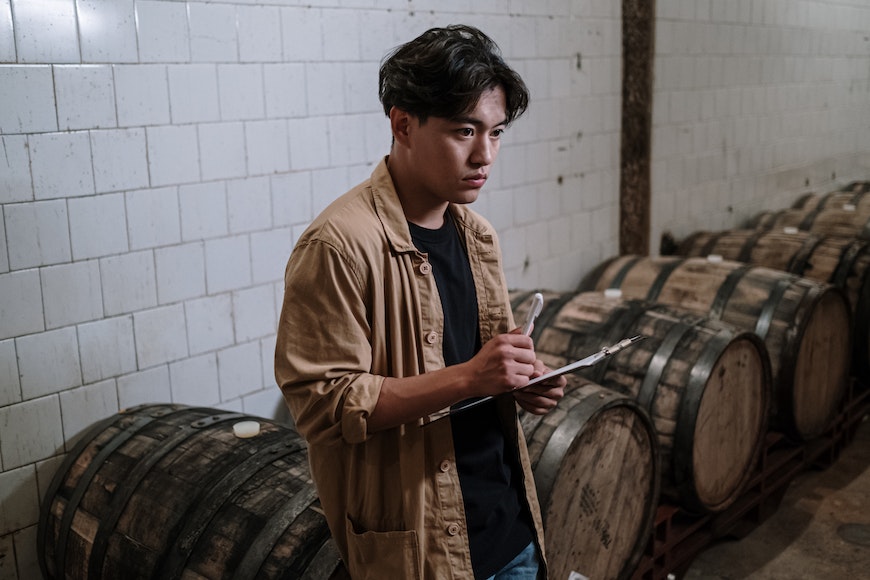
Credit: Cottonbro Studio
Make sure you bring a checklist when you go out to scout a filming location.
This list has two purposes. First, it will remind you to check all the relevant information. Second, the list will help you to keep a consistent record of all the locations you visit.
This way, comparing them and choosing the best one will be easier. It’ll also be helpful to refer back to for future projects.
It should cover all the basics, both narrative and technical.
For the aesthetics and the storyline, you can consider what the ambiance is like. For example, are there any anachronisms?
For the technical part, check if there are noises that could interfere, check how many power outlets there are, etc. Do you have the space you need to create the lighting setup?
- Read more: How to create a shot list
To check all of these things, you can download a template online or make up your own checklist.
2. Visit the location at different times of the day

Credit: Maksim Romashkin
Natural light changes throughout the day, so it’s important to consider this for your shoot.
Remember that it’s not just the amount of light that changes, but also the quality of light. One change can impact the entire mood.
Understanding the light will help you decide the best time to shoot as well as the external lights and light modifiers you might need to bring.
3. Get a location release form

Credit: Pixabay
Securing permits before the shooting day is always a good idea. You don’t want to have the entire film crew at the door and have the property owner change their mind at the last moment.
All the paperwork should be sorted out and kept by the location manager. Then, on the shooting day, it’s helpful to bring either the originals or a copy.
4. Make the most out of each location
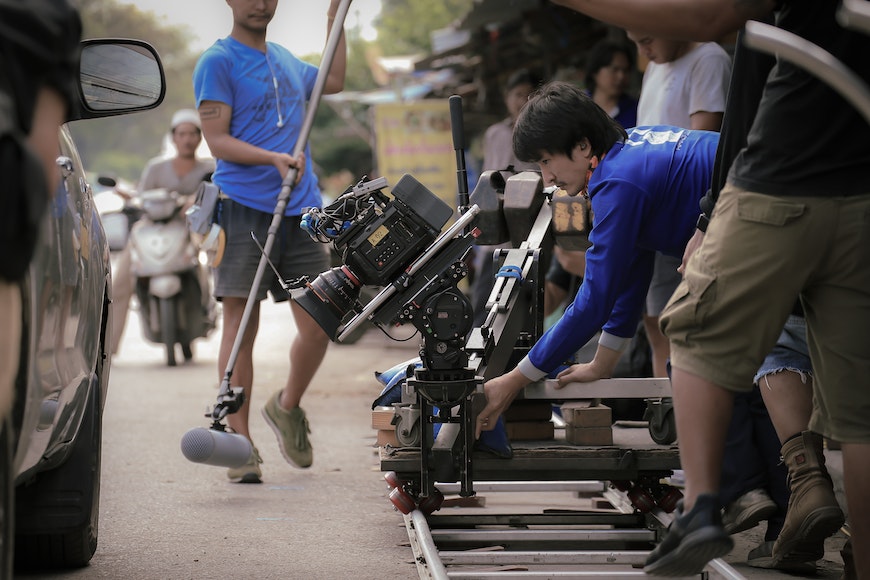
Credit: Sippakorn Yamkasikorn
Location fees can add up quickly, especially if you’re shooting for several days. Not to mention the permits, transportation, etc, on top.
So, using as few locations as possible is a time and money saver.
If possible, film in different areas of the venue instead of moving to other locations.
5. Set up a location visit for the director

Credit: Cottonbro Studio
Location scouts do all the leg work to narrow the list of interesting locations.
They check out the facilities and see if a place is suitable before presenting it to the location manager. The latter will then choose a perfect location to submit to the decision-makers.
The location managers are experts. However, the director, production designer, and director of photography must visit the site in person to approve it.
Location Scouting FAQs
What is virtual location scouting?
Virtual scouting is done when you can’t scout locations in person. You can do this in many ways. The most basic one is using Google Earth and similar platforms. Some more advanced tools allow you to scout a location using VR or 3D filming.
How do you scout a landscape photography location?
You can start by scouting a location online. Use Google Maps, Google Earth, Instagram, Photo Pills, etc.
If possible, make a trip to scout it out in person. Walk around and identify the spots where you’ll want to be shooting. Don’t forget to take photos even if the light isn’t ideal, as this will give you an idea of what other compositions you can do.
How do you get into location scouting?
Anyone can become a location scout. Of course, even better if you have some basic knowledge of photography and filmmaking, as this allows you to understand all the technical aspects required and properly assess if a property has what it needs to be a location.
It’s important to have a big network. That’s also a good reason to attend a film or photography institute.
Otherwise, you can start as a production assistant – an entry-level position. From there, you can grow into a location scout, a mid-level position in the location department.
Final Words
Whether it’s a photo shoot, a short film, or a Hollywood production, location scouting is a key part of the pre-production process.
Finding the perfect venue or site is not just about aesthetics; it makes the story believable.
It also needs to be right in practical terms. You wouldn’t rent a one-bedroom apartment to host 100 people.
In the same way, you don’t want to be filming in a place where there isn’t enough room to shoot or that can’t fit the required crew.
As a location scout, you must consider all the requirements and find the best solution possible.
You need to work well, work fast, and be organized so that you can present the best locations. It may be a dream job, but it requires a lot of leg work and attention to detail.
I hope this article gave you a good idea of what the job is about and what you’ll need to become a location scout.
Let us know in the comments what you think is a must-have on a location. Do you have any tips for those who are just starting out?

Check out these 8 essential tools to help you succeed as a professional photographer.
Includes limited-time discounts.





